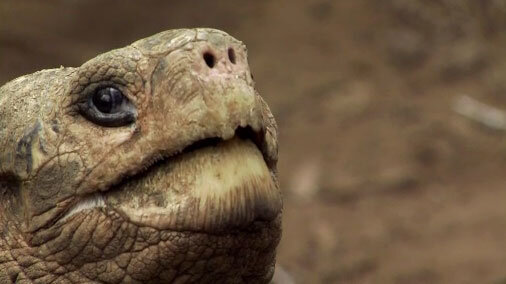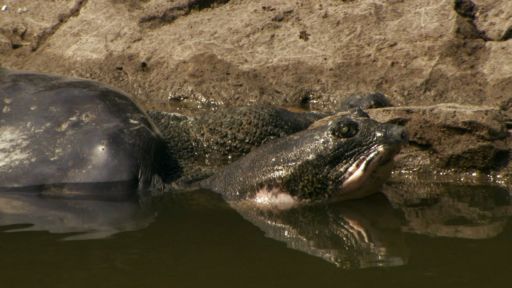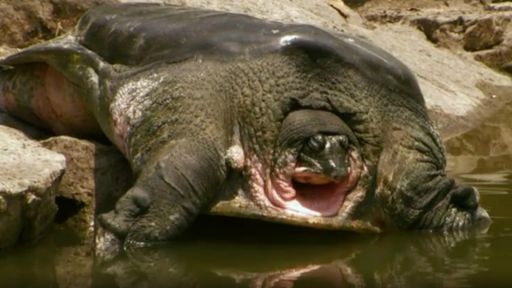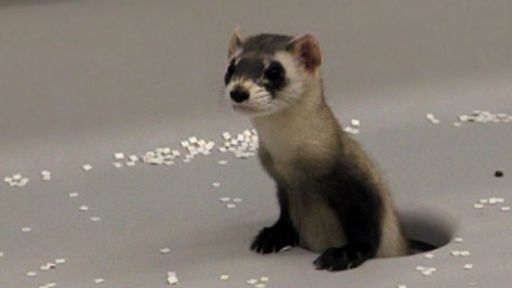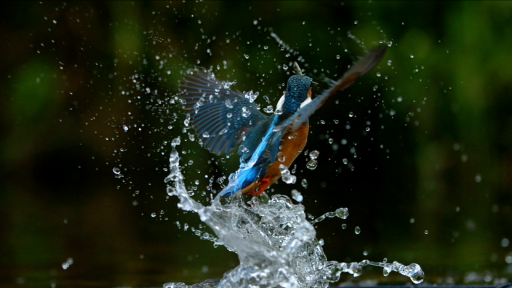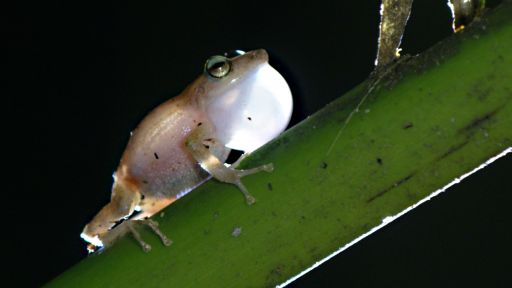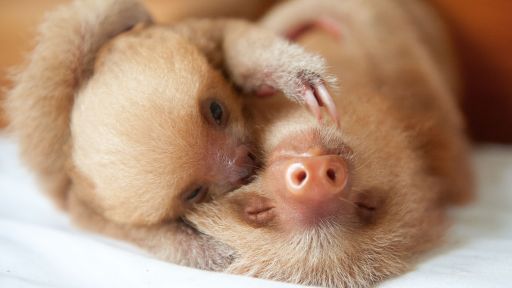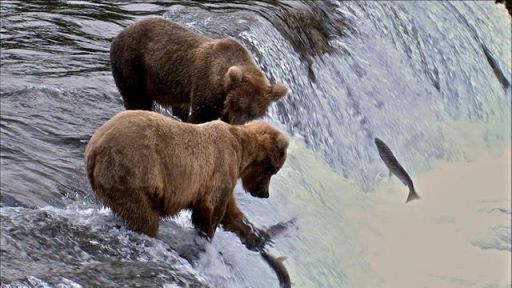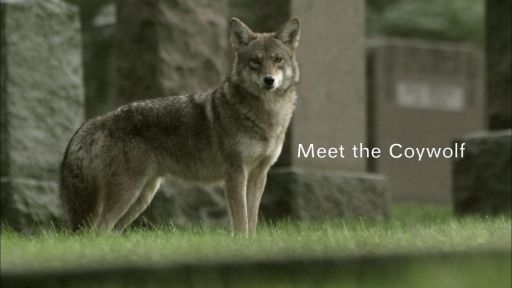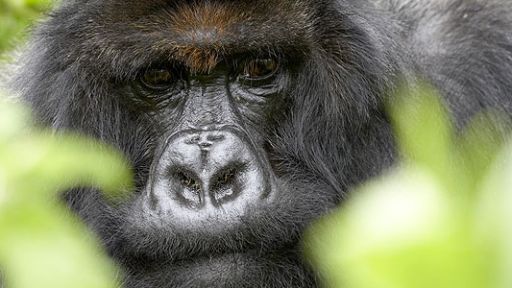TRANSCRIPT
[undulating music] [galloping music] - [Murray Abraham] Every day natural wonders of our world disappear.
Some slip away quietly without notice, without fanfare.
A parrot that no longer flies in the wild, a turtle that is the last of his kind on Earth, and babies that are killing each other as scientists struggle to bring them back to life.
Colorful and charismatic, these embattled creatures face an uncertain future.
- The Sumatran rhino is going to live or die in the next 20 years because of humans and human actions.
And I think it would be reprehensible if humans allowed such a magnificent animal to go extinct.
- [Dr. Kuchling] If we cannot succeed with breeding them, then these animals will be doomed because there are no more.
- [Murray Abraham] But will protecting animals in captivity and breeding generations in a lab stem the extinction tide?
- You can't return something like a Sumatran rhino or a Iberian lynx to just any old environment.
It really needs to be returned to the environment that it evolved in.
- We don't want them in jail, we want them out in the wild and free roaming.
- [Murray Abraham] These are the survivors on the edge, the most endangered species on the planet, the loneliest animals in the world.
[graceful music] [graceful music continues] [graceful music continues] [graceful music continues] [graceful music continues] [graceful music continues] [calming music] [water splashes] [calming music] [birds chirping] Imagine it's morning.
You wake up and you are totally alone.
[calm music] You are 90-years-old, and you are the last of your kind on Earth.
In the Galapagos Islands, one giant tortoise lives this extreme solitary existence.
Meet the loneliest animal in the world, Lonesome George.
George is from Pinta Island, an isolated outpost of the Galapagos.
For centuries, sailors and pirates plundered his island for tortoise meat until they thought they were no more.
37 years ago, researchers found there was one last survivor, George.
[calming music] 90 years is a long life for us, but it's mere middle age for a tortoise.
When George does finally die, millions of years of evolution will come to an end.
Yet in one way, Lonesome George is not alone at all.
Scientists warn that up to 100 species a day are pushed into extinction.
But now, for a few species with a handful of survivors, there could be a glimmer of hope.
[camera shutters clips] [indistinct conversation] Hunan Province, China.
In the southern city of Changsha, the paparazzi converge on the local zoo.
They're angling for a glimpse of a hometown star, one of China's rarest treasures.
She's a Yangtze giant soft-shelled turtle, rafetus swinhoei.
And she's about to embark on a journey that will determine the fate of her species.
[calming music] Rafetus turtles once flourished throughout the Yangtze River valley, but China's meteoric modernization destroyed their habitat and overhunting killed off the last survivors.
For over half a century, one rafetus turtle lived with little fanfare at the Changsha Zoo.
Then two years ago, the zoo discovered they had something extraordinary, the last known female on the planet.
Now over 80 years old, she's kept behind protected glass under 24-hour surveillance.
It seems inevitable that rafetus turtles will be the next of China's natural wonders to disappear, [traditional music] unless this team of international biologists can turn their story around.
[speaking in foreign language] Led by Dr. Gerald Kuchling from the Turtle Survival Alliance, the team has come to oversee a historic blind date, for in Suzhou, 600 miles away, lives her counterpart, the last known male rafetus in China.
- It's basically the last chance we have to keep this particular species on our planet.
If we cannot succeed with breeding them, then these animals will be doomed because there are no more.
- So normally, she lay eggs twice one year.
- [Murray Abraham] Every summer the female lays two clutches of eggs.
- Are they usually all about the same size?
- [Murray Abraham] But without a mate, they remain unfertilized.
This year, the team has a two-week window to encourage her to mate with the male so he can inject her yearly eggs with hope for the future of their kind.
- [Team Member] [indistinct] on her side and behind her.
- [Murray Abraham] The female is precious cargo, and first priority is to ensure her safety on the long journey.
Dr. Scott Davis brings years of experience with handling soft-shelled turtles to the team.
- Right now it's spring and the male and the female that we're working with have just come out of hibernation.
And so it's the perfect time to introduce them, and hopefully they'll mate naturally and she'll lay fertile eggs.
[speaking in foreign language] - She knew we were talking about her.
- Ah, yeah, yeah.
- Her private business.
- Mm.
- [Team Member] Does she want to stick with the [indistinct]?
- [Murray Abraham] The set-up is simple, but the plan is fraught with risks.
Both animals are nearly 100 years old, and in their long, solitary lives, it's possible they've never met a member of the opposite sex.
The last time the male encountered another turtle, he killed him.
The safety of the female is in the scientists' hands.
- [Team Member] Go ahead, go ahead.
- [Team Member] Just leave it, leave it [indistinct].
- [Team Member] So she slipped down?
- [Team Member] Aha.
- [Murray Abraham] Dr. Kuchling oversees a quick ultrasound to make sure she's ready for a mate.
[speaking in foreign language] And then, good news.
- [Team Member] Nine eggs.
- [Murray Abraham] The female is full of eggs that should be ready to lay in about eight weeks.
She's in perfect condition.
[indistinct conversation] - Get her up here with her hand covered and hand- - [Murray Abraham] It's now urgent to get on the road as quickly as possible.
[indistinct conversation] [indistinct conversation continues] [indistinct conversation continues] [bemused music] Ahead, the team faces a 17-hour drive, and it will be a long one.
- [Team Member] Give me that water.
- [Team Member] Water.
- [Team Member] Water's coming.
- No, sweetheart.
No, you, don't.
- [Murray Abraham] The team has to wrestle with keeping the turtle wet and preventing her from hurting herself.
- She is unhappy.
- [Murray Abraham] Thankfully, after a few hours, she gives in to the journey.
- It's going very well.
We've got her comfortably settled and she's peacefully asleep.
I think she'll sleep all the way there.
- [Murray Abraham] The attempt to pair the last of these ancient turtles confronts us with how little we know about our fellow creatures.
Now many are poised to disappear before we discover why they were here.
- I think we have to put effort into saving whatever we can save.
And even if this is apparently doomed species being maintained in captivity with no immediate prospect of going back to the wild, we have to do this.
- We as living creatures ourselves depend on other forms of life for our own survival and for the ecological processes that they generate.
As long as there's some individuals left of a species, we should not give up.
We should make every effort possible to bring them back from the brink.
- [Murray Abraham] But breeding reptiles is relatively easy.
A male and female in the right season should mate.
With other species, the social side of sex reaches a complexity we are just beginning to understand.
[thrilling music] In Southern Sumatra, Indonesia, a forest patrol unit reports for duty.
The squad polices the jungles and waterways of Way Kambas National Park, a sliver of coastal forest.
24 hours a day, the unit safeguards the trees from loggers and dismantles the deadly traps set by poachers.
Their goal, to protect an animal so rare, they only see it two or three times a year.
The Sumatran rhinoceros.
Sumatran rhinos are descendants of the extinct woolly rhino, and they still bear their ancestor's shaggy coat.
[rhino mooing] They're the only rhino species that communicates in song-like vocalizations.
[rhino mooing] A trait they share with whales and dolphins.
[rhino mooing] They're the smallest of the five rhino species and also the most endangered.
In the last 20 years, poaching has slashed their population by more than 70%.
- [Dr. Robin Radcliffe] The Sumatran rhino historically has been threatened because of poaching for their horn.
This small horn is even more valuable than the African rhino horns.
It sells for between $25,000 and $30,000 a kilogram.
[trees creaking] - [Murray Abraham] Today, an even bigger danger is deforestation.
In the last five years, Indonesia's forests have lost the equivalent of five football fields per minute.
Now, fewer than 200 Sumatran rhinos are hanging on to survival in what little remains.
Dr. Robin Radcliffe is on a mission to save the world's rhinos.
Twice a year, he comes to Way Kambas to work at the Sumatran Rhino Sanctuary.
- Good solid sole.
You're okay, Rosa.
Good girl.
They're incredibly amazing creatures.
They're prehistoric.
Look at these armor plates.
These guys are very primitive.
In the past 40 to 50 million years, they haven't changed at all.
[calming music] - [Murray Abraham] The sanctuary encloses 250 acres of protected forest where a handful of rhinos live in divided territories.
[gate clamps] 10 years ago, they launched a captive breeding program to bolster the dwindling wild population.
But breeding these primeval creatures hasn't proved easy.
Their wild courtship behavior remains a mystery, and the one male at the sanctuary was aging and possibly infertile.
After five years, the sanctuary had failed to produce a single baby rhino.
The anxious team needed a breakthrough, something to jumpstart the program.
[calming music] Then 10,000 miles away at the Cincinnati Zoo, Andalas was born.
Andalas was the first captive born Sumatran rhino in more than 100 years, and he spent 6 years growing up at the zoo.
[calming music] [Andalas gallops] In 2007, he made a historic journey to his ancestral home.
- The trip took about 63 hours.
He was in a crate the entire time.
He first traveled by airplane, then by truck, then by ferry across the Sunda Strait to Sumatra, then by truck again finally to the sanctuary.
Even though he's young, he will be the future breeding sire, or bull, here at the Sumatran Rhino Sanctuary.
- [Team Member] Come on, come on.
- [Murray Abraham] Now six years old, Andalas is just reaching adolescence.
The team is trying to determine what he may need to develop into a top bull.
- Good boy.
- [Team Member] Good boy.
- The Sumatran rhinos are probably the most difficult rhinoceros species to breed in captivity.
Part of it historically was we just didn't know how they worked.
Good boy, Andalas.
[indistinct].
Right now, we just want to get normal because Sumatran rhinos are so rare, we don't even know what normal values are.
- [Team Member] Huh?
- Good boy, Andalas.
- [Murray Abraham] Andalas' first potential mate is a young beauty named Rosa.
[rhino mooing] Dr. Radcliffe and his colleagues are studying Rosa to find out when she'll be ready for motherhood.
And today the results bring good news.
- [Dr. Robin Radcliffe] When Rosa first came here, she had very little activity on her ovaries.
In other words, on the ultrasound, we didn't see these follicles.
This means that she's starting to cycle and hopefully she'll be able to breed soon.
This is a really good sign.
- [Murray Abraham] Andalas and Rosa are the hope of the sanctuary.
But even if they achieve a baby, it's clear that captive breeding alone is not going to prevent their extinction.
- I don't believe that the Sumatran rhino can be saved in captivity.
Clearly, the donors who support this place want to see some offspring, and I think that's important.
But the bulk of the work has to be done in saving the animals in the wild, protecting the national parks, and educating people, and making sure we have good law enforcement.
[traditional music] - [Murray Abraham] While the pressure is on Andalas and Rosa to produce some offspring, the sanctuary is reaching out to a new generation of children who will protect and preserve these enigmatic animals.
[children laughing and enjoying] - The Sumatran rhino is going to live or die in the next 20 years because of humans and human actions.
And I think it would be reprehensible if humans allowed such a magnificent animal to go extinct.
[children signing in foreign language] - [Murray Abraham] The Sumatran Rhino Sanctuary is fighting a battle on several fronts, pioneering efforts to breed the animals in captivity, but also defending their forest habitat and the last rhinos left in the wild.
With other species, there are no wild animals left to protect.
[thrilling music] Secluded in the heart of the Persian Gulf Nation of Qatar, the desert obscures an unlikely oasis.
Endangered African antelopes, wild asses, and sand cats live side by side.
[thrilling music] And in its center stands the impossible, a rainforest in the middle of the scorching desert.
[birds chirping] Built by Sheikh Saoud Mohammed Bin Al Thani, the Al Wabra Wildlife Preservation Center shelters over 2,000 rare and critically endangered animals.
And here, 7,000 miles from home, a Brazilian bird is getting a last chance at life, the Spix's Macaw.
Spix's Macaws once thrived in the harsh dry forest of Northeastern Brazil.
By 1995, trapping for the exotic pet trade and the destruction of the forest had reduced the wild bird's population to a single tenacious parrot.
Then in 2000, the last wild bird disappeared.
- The extinction of the Spix's Macaw with the disappearance of that last bird, I think was a really remarkable moment.
It attracted almost no publicity, however, despite the fact that we'd lost an irreplaceable piece of life on Earth, there were almost no headlines.
- The news did reach Sheikh Saoud and his team at Al Wabra bought up many of the last birds in captivity.
From as far away as Switzerland and the Philippines, they've come to this isolated ark in the desert.
- The special focus of this place is to increase the number of highly endangered animals.
And we have some animals here in this preservation.
Nobody else have them in captivity.
We try to increase the number of these highly endangered animals, like the Spix's Macaw, and hopefully one day we can bring them back to the nature, or in this case of the Spix's Macaw, to bring him back and let him fly again.
- [Murray Abraham] Ryan Watson has spent his life working with rare birds, and five years ago, the rarest of all lured him to Al Wabra.
- At Al Wabra, we have 49 Spix's Macaw of the 77 in the international-managed studbook.
So we have a very significant portion of the wild population.
So the work we're doing here is very important in the attempts to one day reestablish the species in the wild where they truly belong.
Oye, no.
- [Murray Abraham] Al Wabra's extreme isolation presents enormous logistical challenges, from maintaining a well-trained staff to supplying fresh water, food, and medicine in the most barren of landscapes.
- We have hundred different species.
My smallest patient is 4 grams and my biggest is 400 kilos.
If you have 100 different animals, you need 100 different kind of food mixture.
And we supply a lot of the food we need from Europe with food container, which comes in every 6 months.
So we are like on an island.
- [Murray Abraham] The isolation does have a benefit.
It creates a natural quarantine preventing the influx of disease and protecting priceless creatures that are among the last of their kind.
- [Ryan Watson] Come on.
[bright music] - [Murray Abraham] The sky-blue Macaws in these cages fly in no forest in the world.
Who were they when they lived in the wild?
Do the birds themselves even remember?
For Ryan, the lack of knowledge added to countless other problems.
Most of the birds arrived in extremely poor health, and many are as closely related as identical twins.
- We adopted a lot of problems with the Spix's Macaws.
And this year what we're really learnt is that they're not as easy to put together as a pair and be compatible as what we initially thought they were.
Good, good, girl.
- [Murray Abraham] The team creates a precise map of each bird's DNA, and the Macaws are then paired up with their most genetically suitable partners.
- Mm, what do you think?
[Macaw squawks] Is that good here?
Yeah, you like it?
Good.
- [Murray Abraham] Compatible genes don't always create romance.
[thrilling music] But with luck, some of these birds could make the historic journey home to Brazil in just five years.
[thrilling music continues] - If the Spix's Macaw can come back from being the world's rarest bird to once more being established in the wild, I think it would be an inspiration and a signal of hope and our ability to do things that would have ramifications well beyond the fortunes of that one blue parrot.
- [Murray Abraham] The future of the playful parrots hangs on the success of these last captive birds.
With other species, breeding the animals is the easy part.
It's once they're born that the trouble begins.
[calming music] In Donana National Park in Southern Spain, a biologist suits up for an encounter with a national treasure.
[zips closes] Something so precious, he's protected behind the strictest biosecurity.
[bewildering music] His name is Eco, and he's a six-week old Iberian lynx.
[speaking in foreign language] Eco is one of just a handful of Iberian lynx cubs on the planet.
- Eco.
Ah, come, [indistinct].
- [Murray Abraham] He's also a twin.
But his brother is kept in a pen next door, and for good reason.
If they were put together, Eco would probably kill him.
[thrilling music] A century ago, over 100,000 lynxes stalked the scrubland of Spain and Portugal.
Nocturnal carnivores, they feed almost exclusively on rabbits.
In the 1950s, humans introduced a viral disease called myxomatosis to control the rabbit population.
As the rabbits disappeared, the lynxes starved.
By 2007, shopping malls, highways, and new apartments had stolen their land.
Now, just over 100 lynxes are making their last stand here in Andalucia.
[footsteps approaching] Four years ago, Dr. Astrid Vargas and her colleagues began a tireless effort to save the world's most endangered cat.
But they would soon discover that these cats had a dark secret.
- Breeding lynxes in captivity in general should be easy, like Eurasian lynxes, bobcats are easy to breed.
And I thought it was gonna be very easy to breed Iberian lynxes in captivity, but they are complicated animals.
- [Murray Abraham] The first success was a set of triplets, a male and two females: Brezo, Brezina and Brisa.
For a month, the cubs played happily together until, without warning, Brezo turned on Brezina and viciously killed her.
- The first time that it happened to us, it was with our first litter and we were completely unaware that this could happen, and we were shocked about the brutality of the attacks.
- [Murray Abraham] More cubs revealed a disturbing pattern.
In their second month, they enter fighting season.
Siblings turn on one another and fight to the death.
- The earliest fight we've ever had was at day 37, which is this really lovely fuzzball that looks completely harmless and its capable of killing another cub with brutal aggression, like severing the throat.
They become like possessed and they just wanna fight.
And the worst is that it lasts for a very long time.
- [Murray Abraham] Ironically, an evolutionary strategy to ensure that only the strongest survive suddenly threatened the future of the entire species.
Dr. Vargas and her crew set up a system to monitor the cats 24 hours a day.
Remote cameras allow volunteers to keep a watchful eye on the cubs.
When a fight breaks out, if the mother can't separate them, the researchers have to brave the claws and step into the fray.
Cubs like Eco are separated from their siblings until the fighting period passes.
Eventually, he'll be reintroduced to the adult pens where he'll learn what it means to be lynx.
In only 4 years, the center has produced 24 cubs.
At this rate, they could begin returning animals to the wild as soon as next year.
But Dr. Vargas cautions that without a serious effort to protect the Mediterranean scrubland, the program on its own is not going to save the Iberian lynxes.
- I see that the breeding program is actually a support tool for lynx conservation.
We don't want them in jail.
We want them out in the wild and free roaming.
So if the lynx were to go extinct in Spain, it would be a complete shame that a rich country like Spain could not maintain its wild population.
It would be completely embarrassing and we would have no right to tell anybody about conserving their wildlife, definitely.
- When we depend upon captive breeding and let the environment where the species came from go, so, well, they don't have a place to go back to.
You can't return something like a Sumatran rhino or a Iberian lynx to just any old environment.
It really needs to be returned to the environment that it evolved in over hundreds of thousands of years in many cases.
- [Murray Abraham] Conserving wildlife is a struggle all governments face, but nowhere more so than in China where the world's last female rafetus turtle is about to be introduced to her new home.
[indistinct conversation] 600 miles and 17 hours into the journey, the team arrives at the Suzhou Zoo.
[bewildering music] The zoo has constructed a divided breeding pond for the occasion, one side for the female, one for the male.
In a few days, if the turtles don't show any aggression, the gate will be opened.
Crowds have gathered to witness the arrival of the famous female.
- This is special because it is the largest turtle in China.
It is one of the most revered turtles in China.
And this is the last male and the last female known in China.
So it's important not just to us as conservation biologists, but to the Chinese people.
This is an extremely important event.
- If you can just move outside, we're gonna come right by, I understand.
- [Team Member] Oh, do not put in the water.
Take care.
[menacing music] - [Team Member] Okay, easy, easy, easy.
Easy, easy, easy, easy.
- [Team Member] I got it.
Here we go.
Here we go.
All right, [indistinct].
Easy, [indistinct], easy.
Here she goes.
Whoa.
- [Murray Abraham] The new pond is a paradise compared to her old home and the female is happy just to be out of the crate.
- [Scott Davis] Excellent.
There she is.
- [Murray Abraham] Team Turtle is elated with the success of phase one.
- This is the last female on the planet of this species of turtle.
And this is literally the last chance we have to save this species.
- [Murray Abraham] Phase two is to coax the male through a connecting tunnel into his half of the pond.
But the fence is there for a reason.
The male is nearly three times the size of the female and he has already killed another turtle.
Instead of mating with her, he could attack her.
- If we introduced him and he does not recognize the female as a female, then there will be a fight.
We are concerned.
But I'm hoping love is in the air and I believe we'll know this afternoon when we see the male and the female on opposite sides of the protective barrier able to see each other and smell each other and touch each other for the first time.
- [Murray Abraham] The unexpected scent of a female lures the male into his half of the pond.
And he's not the only one whose interest is peaked.
Now the two will have the night to get acquainted through the dividing gate.
[storm thunders] The next day a rainstorm inundates Suzhou, but for the turtles, the weather is just setting the mood.
[calm music] The male and female have spent the night pacing the fence, and Dr. Kuchling insists the time is right to open the gate.
- The female definitely is a very good-looking girl.
And the male, I hope, the female thinks the same of the male, that he's a good-looking guy.
From what I can tell, she's obviously interested what's next door and that this is a male.
This is also one reason why we are confident that we should open the gate now.
[speaking in foreign language] - [Murray Abraham] The zoo gives the team the final go ahead.
It's time for the big introduction.
[calm music] [calm music continues] The male hesitates to approach the open gate.
And the team gets ready for an emergency separation.
[calm music continues] [calm music continues] [speaking in foreign language] [calm music] [calm music continues] Finally, he makes his move.
- [Team Member] There he goes.
He's headed right towards her.
- [Murray Abraham] And the two disappear into a swirl of bubbles.
- There's something going on in the middle of the pond there.
- [Murray Abraham] The underwater courtship begins as the team closely watches for any signs of aggression.
But so far, all signs point to a successful match.
- [Scott Davis] Oooh, there she goes.
- [Murray Abraham] In a few months, the female will lay her eggs, and they'll know for certain if the plan has worked.
- She can lay anywhere from 20 to 80 eggs.
And so one or two fertile clutches would by an order of magnitude increase the number of this species on Earth.
If this effort is not successful, the species will become extinct.
- [Murray Abraham] The future of the rafetus turtle now depends upon a dangerously limited gene pool.
But biologists agree this is no reason to let the animals die out.
- You know, sometimes people say, "Well, the species gets below a certain number, it's no longer viable genetically."
I don't believe it.
I think that if there's a pregnant female remaining, you should make the effort to try to bring that species back from the brink of extinction.
- [Murray Abraham] Captive breeding in such extreme cases can keep a species alive.
But by the time the captive population is big enough to return to the wild, the question will be, are there any wild places left?
[beating music] It's morning and the forest comes alive with some of evolution's most unusual experiments.
Sifakas, ringtailed and crowned lemurs set out to forage for fresh leaves.
But these lemurs are a long way from their native Madagascar.
They're living in the Southern United States at the Duke University Lemur Center, the largest collection of endangered primates in the world.
[calming music] Though amazingly diverse, all lemurs are descendant from a single primate ancestor that colonized Madagascar more than 60 million years ago.
From that one source, at least 70 different kinds evolved.
- I mean, I always think of lemurs as being evolution's finest moment.
They're just a spectacular array of animals in and of themselves.
They're beautiful.
They're charismatic.
They go from a tiny mouse lemur sized all the way up at one point there were giant lemurs that were the size of gorillas.
- [Murray Abraham] Madagascar is the fourth biggest island in the world.
And of its 200,000 known species, three-fourths are found nowhere else on Earth.
But humans have cleared the island of over 80% of its forests.
And as the trees have disappeared, so too have the lemurs.
- Madagascar is one of the most striking examples of large-scale extinctions in recent times.
People first arrived in Madagascar maybe 2,000 years ago.
And since that time, many very interesting creatures have disappeared, including 8 genera and at least 15 species of giant lemurs.
[bewildering music] - Right now, Madagascar is hitting the radar of a lot of mining companies around the world.
However, there isn't really a plan for what's going to happen to the inhabitants of the forest that are going to be destroyed.
And it's just a fact that the forest will be destroyed, the lemurs will lose their homes.
[lemurs shriek] - [Murray Abraham] The Duke Lemur Center has created a Noah's ark of lemurs, sheltering 200 animals from 20 different species.
Some, like Titus, are the only captive members of their kind.
[Titus growls] - Titus is the only golden crowned sifaka in captivity in the world.
And his population in the wild is critically endangered.
Any primate that doesn't have another primate as a friend, I would say, is lonely.
I mean, in general, primates are gregarious.
And so I definitely think he'd be happier if he had a female companion.
But we try to enrich him as much as possible, and he does enjoy the presence and company of humans.
So we try and do that as well and just kind of make his life as comfortable as possible.
- [Murray Abraham] Scientists at the center are spearheading efforts to breed lemurs in captivity, uncovering the mysteries of their biology through trial and error.
Today, they're hoping for another successful pregnancy with a red-ruffed lemur named Carina.
- She bred about two months ago.
So we're going to do a palpation initially to see if we can feel fetuses.
And after that, we're gonna go ahead and do an ultrasound, just to verify that if there are fetuses there, one, and then two, if they're viable and what their position is.
And what we're gonna do is start looking for the uterus and possible fetuses.
So what I'm gonna do is come around this way.
Okay, so we have a fetus right here, right in that region.
So this is the spine of a fetus right there.
This is actually the beating heart right there.
I think we may even have a threesome here, Nicki.
- Oh my god.
- You may have triplets.
- Sorry, [indistinct].
- How exciting!
[all laughs] - We see ourselves as a safe haven for lemurs with the ultimate goal of reintroducing species to Madagascar once the environmental situation is stabilized.
The hope is that we can keep the species going, keep them genetically viable, and by virtue of having the experience of the free-ranging environment that they already sort of predisposed to know how to survive in the jungles of Madagascar when they get there.
[thrilling music] - [Murray Abraham] Madagascar's president has promised to triple the country's protected areas, and conservationists are optimistic that at least some of the lemurs habitat will survive.
But others argue that captive-born animals have lost the survival skills of their wild ancestors.
With more and more species reduced to small captive populations, many wonder if they really have any future in the wild.
[thrilling music] [calming music] On the rolling plains of Northern Colorado, a warehouse conceals a towering scientific achievement, a species resurrected from the dead.
[calming music continues] 27 years ago, the black-footed ferret, the only ferret native to North America, was considered extinct.
- It wasn't until a ranch dog named Shep actually found the last known wild population of black-footed ferrets.
He brought a dead black-footed ferret to his owner's door.
It turned the conservation world upside-down.
- [Murray Abraham] The US Fish and Wildlife Service sent out a search party and found a small population of ferrets.
With 18 of these hardy survivors, a captive breeding program was launched with the aim of returning a new generation to the American plains.
Paul Marinari directs the Black Footed Ferret Conservation Center on the Colorado/Wyoming border.
Every ferret at the center can trace its lineage to those original 18 animals.
With such a small founder population, the team has to carefully orchestrate each pairing, matching up mates based on genetic makeup.
- And what we do is bring the male to the female's cage just like it would be in the wild.
Get her to come up and show her face.
That way she's not totally surprised.
It's kinda like fast-track dating right now.
They're on the first date.
Hopefully in about 10 minutes, they'll be on the second date.
And maybe in about 15 minutes, they'll be third base, and then grand slam.
- [Murray Abraham] The center produces up to 400 kits a year.
- So we'll peek in here on Clover, her litter of five, and determine what sex those kits are.
That's a little boy.
Here's a little girl.
- [Murray Abraham] After a few months, the kits are placed in an outdoor bootcamp where they learn the skills they'll need to survive on the open plains.
- It's kind of like a Head Start program where they spend about two months in the pens getting fed live prairie dogs and experiencing a natural burrow system.
We find that the animals that go through preconditioning have a much greater survivorship than those just released without any prior Head Start program.
- [Murray Abraham] Since 1991, over 2,400 ferrets have been released at 18 different sites throughout the US and Mexico.
Today, about 1,000 animals survive in the wild, where just two decades ago, there were none.
But Paul warns that the ferrets now face problems with disease and the conversion of the prairies to farmland.
And it's too soon to consider the black-footed ferret safe.
- It is considered a successful program, but it can all be taken away, you know, in the blink of an eye.
Truly successful would mean shutting down the captive breeding facilities and having the species back in the wild through self-sustaining populations.
But we are, by no means, out of the woods yet.
- [Murray Abraham] The black-footed ferrett's precarious return depends not only on captive breeding, but on all of the organisms that make up its prairie ecosystem.
It's a microcosm of the planet, where every animal is another link in the chain of life.
- We know that the death of any species is highly likely to influence other species around it.
But then there's a matter of what does it mean when you pull a species out, you extinguish it, you just eliminate it within the ecosystem.
Well, we don't know in most cases.
It could be catastrophic there.
[bewildering music] - [Murray Abraham] In the case of Lonesome George, the loss of his species left Pinta Island without a large herbivore.
The vegetation, now overgrown, is pushing native birds from their nesting sites.
In Indonesia, the forests have lost the Sumatran rhino, which once shake their environment, creating wallows where other organisms thrived and dispersing the seeds of the plants they eat.
China's rivers have lost their dominant turtle, the rafetus.
But the rivers are so polluted, everything is struggling to survive.
Spain has lost its top predator, the Iberian lynx, and the food chain of the coastal Mediterranean has tumbled out of balance.
Each animal teetering on the edge of existence is a living thread in our life support system, Earth.
- The surface of the Earth is a living layer, the purity of the water, the foundation for the food we eat, to the very air we breathe, that is our world.
That's the only world we can live in.
We have to have an enormous variety of other organisms around us to make our life possible.
- [Murray Abraham] Biologists warn that these last lonely animals are each a tenuous support in a fragile house of cards.
No one knows how many more we can afford to lose.
- I'm convinced that the road we're on will lead us to disaster, not only for life on the planet, but also for humankind.
And this isn't just about the extinction of monkeys and parrots, this is about human welfare.
- I definitely have hope for conserving species, but even though I am an optimistic person, in the long run, I see a pretty black future.
I don't think we as a society are conscious of how aggressive we are being to the planet.
And even though we're more and more aware of climatic change and all these things, I don't see a society change.
- We're so fascinated with the dinosaurs that disappeared.
We spent a lot of time studying them and trying to recreate what dinosaurs are all about.
Well, we've got wonderful creatures like the dinosaurs sharing the planet with us.
We don't wanna lose the rhinos or the elephants or the tigers.
If we lost them, it'd be absolutely tragic.
And we have entirely within our power, for very little money, the ability to prevent these animals from going extinct.
- I have to repeat the phrase, where there's life, there's hope, and we have to always put the effort into keeping these things while we still can.
[weighty music] [weighty music continues] [weighty music continues] [weighty music continues] [undulating music] [undulating music continues] [undulating music continues] [undulating music continues] [undulating music continues] [bright music]

